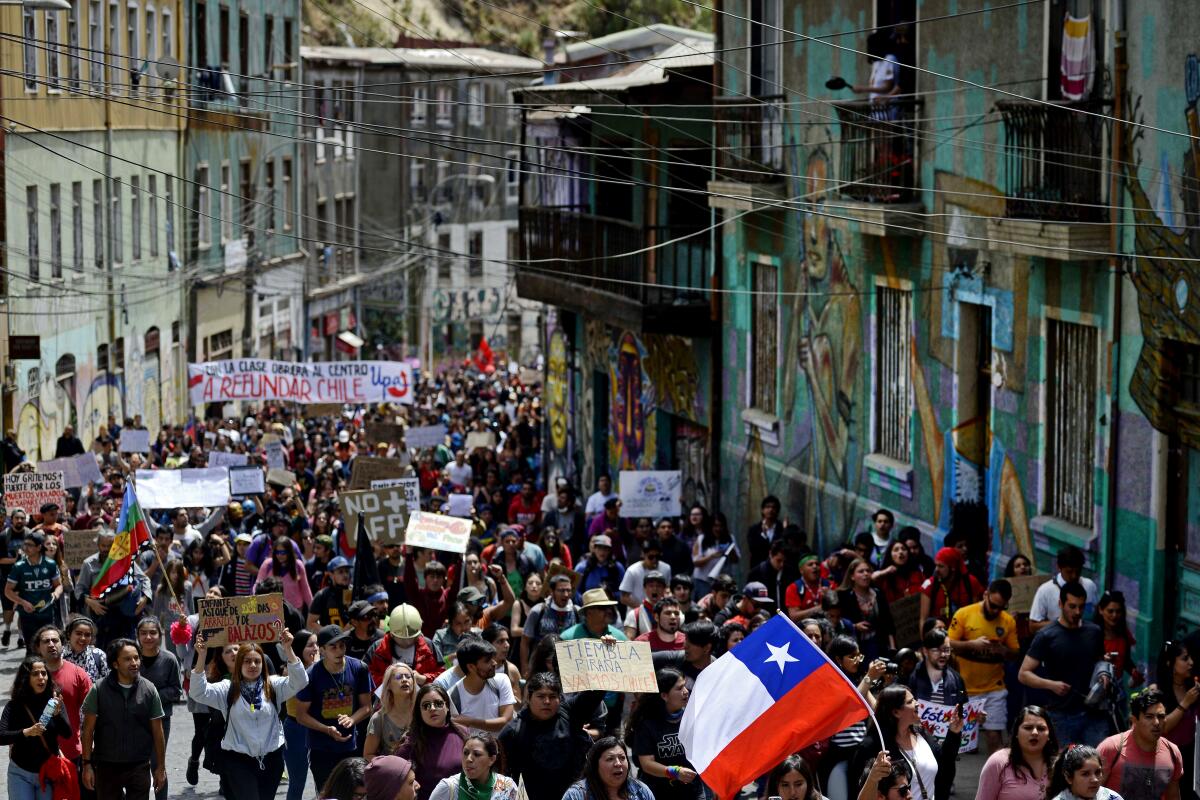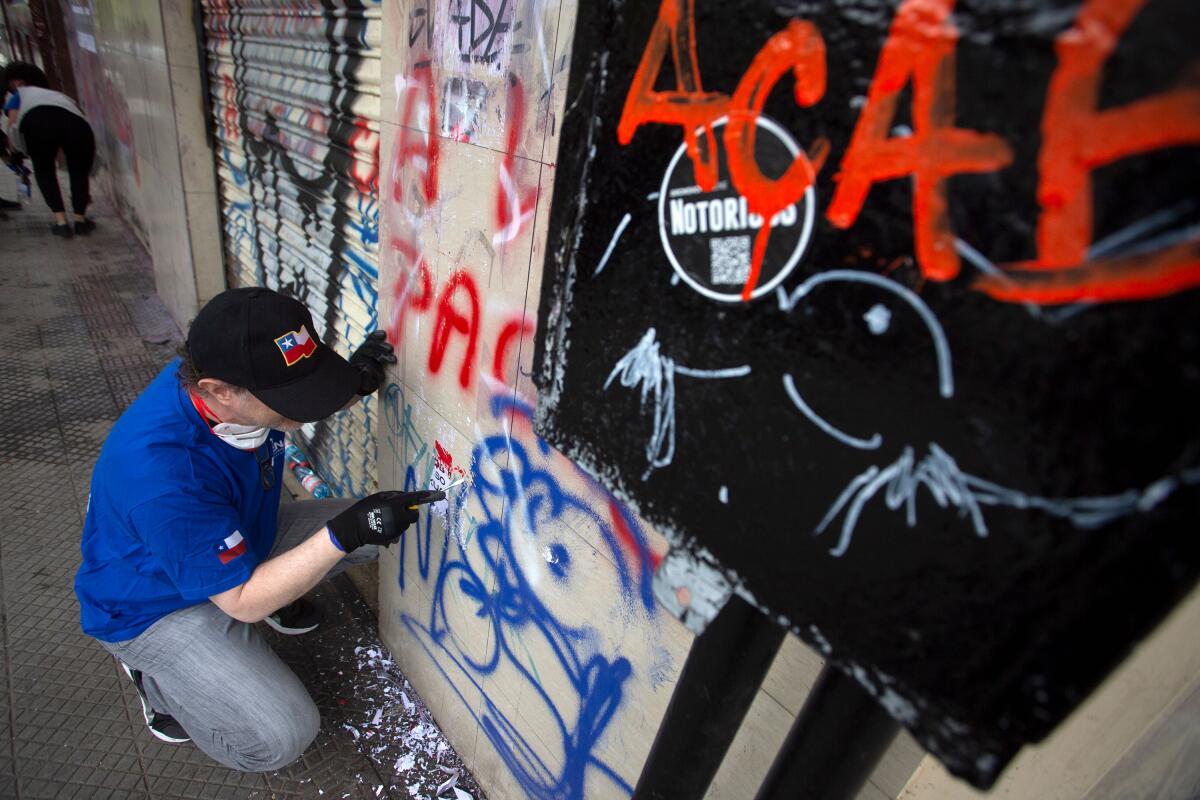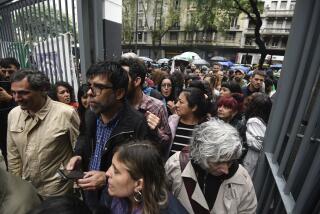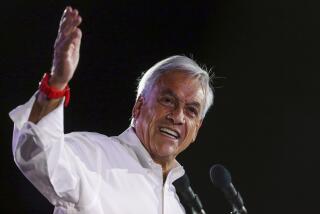Chile lifts curfew a day after massive protests

Chilean President Sebastian Pinera lifted a curfew on major cities Saturday — a day after more than 1.2 million people gathered here in the capital to protest the government.
“We’ve all heard the message, we’ve all changed,” Pinera told reporters from La Moneda presidential palace, where he called for a major Cabinet reshuffle. “I have put all my ministers on notice in order to restructure my Cabinet to confront these new demands.”
He has already announced plans to increase the minimum wage, bolster retirement payments, freeze electricity rate increases and reduce the salaries of senior public officials. In Chile, a member of Congress earns almost $13,000 per month, while the minimum wage is about $422 a month.

Protests in this nation of 19 million began last week as a social media campaign by middle and high school students who called on commuters to jump subway turnstiles in rejection of transit fare hikes announced Oct. 6. Pinera eventually rescinded the fare hikes, but by then the demonstrations had expanded into a broader call to reduce widespread social inequality.
At least 19 people have died in the unrest, including five reportedly killed by the police or military. Others were killed during looting, fires or other incidents.
Pinera said on Saturday that “if circumstances allow it,” the state of emergency he declared on Oct. 18 — the first under a democratic government here — will be lifted Sunday evening.
The state of emergency granted the armed forces control of public security and the power to restrict free assembly. But for many Chileans, the images of soldiers in the streets brought back dark memories of the military junta of Gen. Augusto Pinochet, who ruled the nation between 1973 and 1990.

On Saturday, the city began to return to normal, though soldiers remained present in many subway stations. The protests had resulted in damage to 80 subway stations, at a loss of about $300 million.
“It’s a good thing that the curfew has ended because people were demonstrating peacefully,” said Vania Martinez, a 25-year-old nutritionist in Santiago. “I think it’s possible to make changes, but I don’t really trust any government to make it happen.”
Not all residents celebrated the end of the curfew.
“This is terrible for me because demonstrators tried to loot my restaurant,” said Carlos Siri, 52, a sandwich shop owner. “I’m not saying it’s a good thing to have military in the streets, but it seems to be the only solution.”
In addition to the deaths, more than 1,100 people were injured in Santiago alone — 51% by pellets, 17% by firearms and 10% by beatings — according to the Medical College of Chile.
There were also at least 12 complaints of sexual violence against women and girls. The victims were forced to undress at police stations, said the National Institute of Human Rights of Chile, an independent state agency.
More to Read
Start your day right
Sign up for Essential California for news, features and recommendations from the L.A. Times and beyond in your inbox six days a week.
You may occasionally receive promotional content from the Los Angeles Times.






